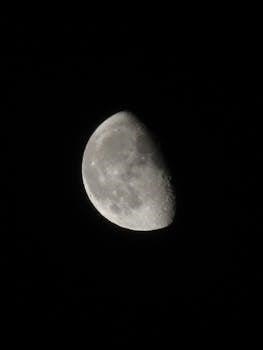A Lady’s Guide to Celestial Mechanics
Embark on a captivating journey through the cosmos! This guide unveils the secrets of celestial mechanics, tailored for the discerning lady. Explore the elegance and beauty of planetary motions and gravitational forces with clarity and grace.
Welcome, ladies, to the enchanting realm of celestial mechanics, where mathematics dances with the stars! This field, once deemed the domain of Newton and Leibniz, is now accessible to all who seek to understand the clockwork universe. Forget dense equations; we shall unravel the secrets of orbital motion, gravitational forces, and planetary interactions with clarity and a touch of elegance.
Celestial mechanics is not merely abstract theory; it’s the foundation of space exploration, satellite technology, and our understanding of the cosmos. Learn how these principles are used in spacecraft trajectory design, to understand tidal interactions, and predict the movements of celestial bodies with precision. So, prepare to embark on a journey through the solar system, where knowledge and beauty intertwine!

Foundational Concepts
Before we journey further, let us lay the groundwork. We’ll explore the vital principles that govern celestial motion, providing a solid base for understanding the intricacies of the cosmos with confidence.
Newtonian Mechanics and Gravitation
Let’s delve into the bedrock of celestial understanding⁚ Newtonian mechanics. Sir Isaac Newton’s laws of motion and universal gravitation elegantly describe how celestial bodies interact. Imagine planets waltzing in space, their movements dictated by gravity’s gentle pull.
Newton’s laws provide a framework for predicting the paths of planets, comets, and even spacecraft. We’ll explore concepts like inertia, force, and acceleration, making them accessible and engaging. Grasp how these laws form the basis for understanding orbital dynamics.
Gravitation, the force that binds the cosmos, will be demystified. Discover how the mass of an object influences its gravitational pull. Learn how gravity shapes the orbits of celestial bodies, creating the mesmerizing patterns we observe. Embrace the elegance and simplicity of Newton’s revolutionary ideas, forming a solid foundation for further exploration.
Lagrangian Mechanics
Step beyond Newtonian mechanics and into the realm of Lagrangian mechanics, a more sophisticated yet elegant approach. Instead of forces, Lagrangian mechanics focuses on energy, offering a powerful way to analyze celestial motion. It’s like understanding a dance through its flow, rather than individual steps.
The Lagrangian, a function representing the difference between kinetic and potential energy, becomes our guiding principle. By minimizing the action, we can determine the equations of motion. This method is particularly useful for complex systems where traditional Newtonian approaches become cumbersome.
Embrace the beauty of generalized coordinates and the power of variational principles. Lagrangian mechanics provides a deeper understanding of the underlying principles governing celestial motion, allowing us to tackle more intricate problems with grace and efficiency. It’s a sophisticated tool, yet presented here in an accessible and engaging manner.

Orbital Elements and Kepler’s Laws
Unveiling the secrets of planetary paths! We explore orbital elements, the elegant parameters that define each celestial dance. Learn Kepler’s Laws, the fundamental rules governing these cosmic ballets with precision.
Defining Orbital Parameters
Understanding orbital parameters is essential for comprehending celestial mechanics. These parameters, like celestial coordinates, are a set of six values that precisely define an object’s orbit around another body. Imagine them as the address of a planet in space!
The first parameter is the semi-major axis, representing the average distance between the orbiting body and its primary. Then comes eccentricity, which describes the shape of the orbit, ranging from a perfect circle to a highly elongated ellipse. Next, inclination indicates the tilt of the orbit relative to a reference plane.
Longitude of the ascending node specifies the orientation of the orbit within that plane. Argument of periapsis defines the orientation of the orbit’s ellipse, and finally, true anomaly pinpoints the orbiting body’s position at a specific time. Together, these elements unlock the celestial dance.
Understanding Kepler’s Laws of Planetary Motion
Johannes Kepler’s laws revolutionized our understanding of planetary motion. The first law states that planets move in elliptical orbits with the Sun at one focus, dispelling the long-held belief in perfect circles. Imagine each planet tracing an elegant oval path as it journeys around the sun.
Kepler’s second law, the law of equal areas, reveals that a planet sweeps out equal areas in equal intervals of time. This means planets move faster when closer to the Sun and slower when farther away. Think of it as a cosmic waltz, with the pace changing depending on proximity.
Finally, the third law establishes a relationship between a planet’s orbital period and the size of its orbit. The square of the period is proportional to the cube of the semi-major axis.

Perturbation Theory
Celestial mechanics isn’t perfect! Perturbation theory gracefully addresses how other celestial bodies or forces slightly alter ideal orbits. Learn how to calculate these deviations and appreciate the complex dance of the cosmos.
Sources of Perturbations
In the realm of celestial mechanics, idealized orbits rarely exist in reality. Various factors act as sources of perturbations, causing deviations from the perfect elliptical paths envisioned by Kepler. Understanding these sources is crucial for accurate predictions of celestial motion.
One major source is the gravitational influence of other celestial bodies. While the primary body, like the Sun in our solar system, dominates, the gravitational pull of planets, moons, and even asteroids exerts subtle yet significant effects on orbital paths. These interactions are complex and can lead to gradual shifts in orbital elements over time.
Non-spherical shapes of celestial bodies also contribute to perturbations. Real-world objects are not perfect spheres, and their irregular mass distributions create variations in the gravitational field, influencing the motion of orbiting objects. Furthermore, atmospheric drag, solar radiation pressure, and even relativistic effects can introduce perturbations, especially for artificial satellites.

Applications of Celestial Mechanics
Celestial mechanics finds diverse applications, from spacecraft trajectory design to understanding tidal interactions. Its principles underpin our exploration of space and our comprehension of celestial phenomena, showcasing its enduring relevance.
Spacecraft Trajectory Design
Crafting the perfect path for a spacecraft requires a deep understanding of celestial mechanics. Imagine orchestrating a cosmic ballet, where gravitational forces and orbital parameters dance in harmony to guide our emissaries to distant worlds.
The journey begins with precise calculations, employing Kepler’s laws and perturbation theory to account for the myriad influences shaping a spacecraft’s trajectory. Mission planners meticulously chart courses, optimizing fuel consumption and minimizing travel time, while navigating the gravitational fields of planets and moons.
From interplanetary voyages to satellite deployments, celestial mechanics is the architect of our spacefaring endeavors. Sophisticated software simulations allow engineers to test and refine designs, ensuring that our probes arrive at their destinations with pinpoint accuracy. This delicate balance of physics and engineering enables us to explore the universe and unlock its secrets.
Understanding Tidal Interactions
Delve into the fascinating world of tidal interactions, a celestial dance between gravitational forces that sculpt landscapes and influence planetary rhythms. Tides, most familiar as the daily rise and fall of ocean waters, are a manifestation of these interactions.
The gravitational pull of the Moon, and to a lesser extent the Sun, exerts a force on the Earth, creating bulges of water on both the near and far sides of our planet. As the Earth rotates, these bulges move, resulting in the ebb and flow we observe as tides.
However, tidal interactions extend beyond simple oceanic phenomena. They play a crucial role in the evolution of planetary systems, affecting the rotation rates and orbital distances of celestial bodies. For example, the Moon is slowly drifting away from the Earth due to tidal forces, a subtle but profound consequence of celestial mechanics. Understanding these forces unlocks secrets to planetary systems.

